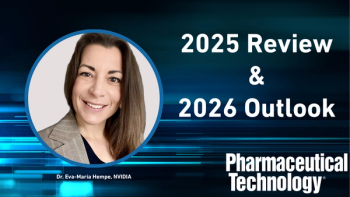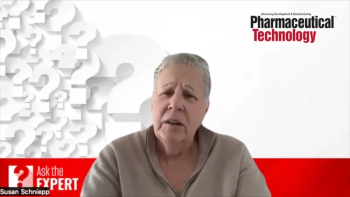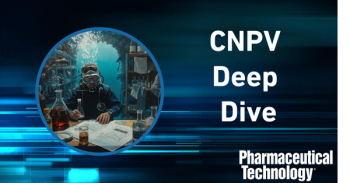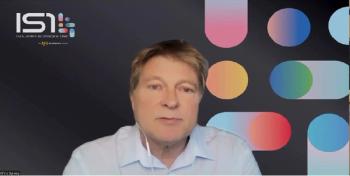
PTSM: Pharmaceutical Technology Sourcing and Management
- PTSM: Pharmaceutical Technology Sourcing and Management-02-28-2007
- Volume 3
- Issue 2
SAFC Eyes India and China and Seeks to Build Biosciences
Continuing an ambitious growth strategy, SAFC eyes CGMP manufacturing capacity in India for its custom-synthesis business and seeks to gain large-scale organics manufacturing capacity in China for raw-materials supply. And, its biosciences segment seeks opportunity in single-use disposable manufacturing.
SAFC (St. Louis, MO,
An integral part of Sigma-Aldrich's growth strategy
SAFC accounts for 27% of Sigma Aldrich's corporate sales and is Sigma Aldrich's second largest business unit. "SAFC is key to Sigma-Aldrich's growth plan," says Wick. In 2005, SAFC posted sales of $437.3 million, which included its acquisition of JRH Biosciences. With the acquisition, SAFC posted a sales gain of 11.3%, which included organic growth of 5.8%.
SAFC's Pharmorphix site in Cambridge, United Kingdom is focused on solid-state studies.
Serving the pharmaceutical market is an important part of SAFC's strategy. Roughly 70% of SAFC's revenues come from pharmaceutical-related businesses.
SAFC consists of four business segments. The largest piece is SAFC Supply Solutions, which accounted for 47% of SAFC's 2005 sales. SAFC Supply Solutions offers customized raw materials to the pharmaceutical, diagnostic, and flavors and fragrances industries. SAFC Biosciences accounts for 31% of SAFC's sales and provides raw material for cell-culture manufacturing. SAFC Pharma provides custom synthesis of active pharmaceutical ingredients (APIs) and intermediates and accounts for 19% of SAFC's total sales. The last business segment, SAFC HiTech, offers high-purity inorganic materials, electronic chemicals, and custom-manufacturing services, principally to the electronics industry.
Driven by SAFC Pharma, its API custom-manufacturing unit, and SAFC HiTech, Wicks says SAFC hopes to achieve growth of 10% without acquisitions and 15% growth with acquisitions in 2007.
Building outsourcing capabilities at SAFC Pharma
An important part of SAFC's growth strategy is to broaden its position in pharmaceutical outsourcing and the supply of raw materials to the pharmaceutical and biotechnology industries as companies seek to make their supply chains more cost-efficient and productive.
"The trends in the pharmaceutical market are clear," says Wicks. "There is increased pressure to reduce costs in most organizations and in most departments. We see pharmaceutical companies aggressively outsourcing research to India, although China's role in the drug discovery and development chain is not yet resolved. This increased globalization is placing increased value on supply-chain management," he says.
At the same time, pharmaceutical companies are facing new challenges resulting from the changing finances of new drug launches. "Blockbusters are becoming rare," he says, "and, as a result, pharmaceutical companies are required to achieve greater cost reductions and efficiencies in managing their supply chains."
To meet those demands, SAFC is broadening its positions in different pharmaceutical-outsourcing segments. Wicks points to industry estimates that place the total market for pharmaceutical outsourcing at $25–30 billion. This value breaks down into four main segments: drug-discovery outsourcing ($5–6 billion), drug-substance outsourcing ($7–8 billion), final-formulation outsourcing ($8–9 billion), and clinical outsourcing ($9–10 billion). Outside of outsourcing, raw-material supply to the pharmaceutical and biotechnology industries is estimated at $15–20 billion.
SAFC is solidifying its position in drug-substance outsourcing and custom synthesis, its traditional area of strength, and is looking to increase its participation in formulation-support services. SAFC built its position in drug-substance outsourcing with the 2004 acquisitions of the contract manufacturing organizations (CMOs) Ultrafine (Manchester, UK) and Tetrionics (Madison, WI). The acquisition of Tetrionics provided SAFC with high-potency API-manufacturing capabilities at facilities in Madison, Wisconsin. Last year, SAFC invested $18 million to double high-potency manufacturing capacity at those facilities.
SAFC also expanded its API custom-synthesis business by acquiring from Honeywell International (Morristown, NJ,
Reflecting strong demand, SAFC introduced seven-day-per-week workshift extensions at its Gillingham, United Kingdom API manufacturing site and its Manchester, United Kingdom medicinal-chemistry and development facilities.
In October 2006, SAFC invested $12 million and opened a new 139,000-ft2 medicinal-chemistry facility in Bangalore, India. SAFC Bangalore features more than 60,000 ft2 of production and research and development laboratory space. The facility includes manufacturing suites for chemical development and production to 50-L scale and an on-site warehouse. The operation offers preclinical, process development, and scale-up services and is designed to work in alignment with SAFC's Manchester medicinal-chemistry operations. "The Indian facility works in partnership with our Manchester facility," says Wicks. "It provides our customers with Western communication and business practices with access to Asian economics."
Wicks says that SAFC "is looking to establish a footprint in Asia by gaining a CGMP manufacturing facility for API synthesis in India and a large-scale, flexible organics manufacturing facility in China that could provide raw materials for SAFC businesses. "For China, we are open to an acquisition or establishing a joint venture, depending on what opportunities become available," says Wicks. "For India, we are seeking commercial-scale CGMP capacity as a means to offer lower-cost production capabilities in our custom-synthesis business." SAFC also is looking to strengthen its sales and marketing presence in Japan, with a target of two to three API projects.
Another new piece to SAFC's drug-substance outsourcing activities is a transgenic extraction and purification facility. The $16-million facility in St. Louis, Missouri is due for completion in mid-year 2007. Wicks says the facility is one of the world's largest biologics extraction facilities and is a CGMP transgenic facility. It can process as much as 5000 kg per week. The facility is segregated for plant and animal processing. "We have already scheduled API projects for the facility," says Wicks.
SAFC also acquired Pharmorphix (Cambridge, United Kingdom,
SAFC positions in the biosciences
SAFC Biosciences is another key piece for the company in serving the life-sciences industry. SAFC Biosciences is the fusion of Sigma-Aldrich's industrial cell-culture business and JRH Biosciences, which SAFC acquired in 2005. SAFC Biosciences develops, manufactures, and markets raw materials for cell-culture reagents, explains Archie F. S. Cullen, vice-president of sales and marketing for SAFC Biosciences. The company supplies CMOs, the biopharmaceutical businesses of Big Pharma companies, and small and emerging biopharmaceutical companies. Cullen points to strong growth potential in the market for human biopharmaceutical development and manufacture using mammalian cell cultures. Industry estimates expect growth of about 10–20% per year in mammalian cell-culture production, with almost 900 cell-culture projects under clinical development.
A key trend in the biopharmaceutical market is the move to serum-free media and animal component-free products. "Early major approved therapies are being relaunched using serum-free media," says Cullen "and all new therapies are being developed and launched in serum-free media." To address this trend, SAFC, in collaboration with Vivalis (Nantes, France,
SAFC also began beta testing in January 2007 to evaluate the impact of changes in process parameters on the performance of plant-based hydrolysates. Plant-derived hydrolysates can provide performance enhancements to the serum-free cultivation of mammalian cells, but there have been historical concerns about variability in performance.
Customization also is an important trend in the supply of media, and SAFC offers liquid medium and dry-powder medium custom formulations, which include liquid medium dispensed in single-use disposables.
Single-use disposable manufacturing is another key trend in biopharmaceutical manufacturing, explains Cullen. "Many companies are employing single-use disposable manufacturing units to help lessen validation and capital costs," he says. SAFC Biosciences has a collaboration with Advanced Scientific, Inc. (Chalmette, LA) to offer custom design and manufacture of single-use processing systems for handling, storage, and processing. SAFC Biosciences also is a member of the BioProcess Systems Alliance (BPSA,
Given the biopharmaceutical industry's increased interest in single-use disposable manufacturing, SAFC is seeking to acquire a disposable-bag manufacturer, says Wick. SAFC now offers its "Bioeaze" disposable bioprocessing systems.
SAFC Biosciences also is advancing an alternative to traditional clone-selection approaches through "Cell Xpress," which uses "LEAP" (laser-enabled analysis and processing) instrumentation. LEAP combines in situ imaging with laser manipulation to identify, purify, and monitor expansion of high-secreting clones. The system has been validated on multiple biopharmaceutical cell lines, including Chinese hamster ovary (CHO) lines. CHO lines are used in roughly 80% of biopharmaceutical production, says Cullen.
SAFC targets pharmaceuticals and diagnostics
SAFC Supply Solutions is another piece of SAFC that serves the life-sciences industry. SAFC Supply Solutions complements Sigma-Aldrich's research chemicals business by offering customized raw materials to the pharmaceutical, diagnostics, and flavors and fragrances markets. As part of its custom offerings, SAFC Supply Solutions offers analytical, packaging, and quality-assurance support services.
A key move made by SAFC Supply Solutions in 2006 was employing a customer-centric focus by organizing around markets instead of on a product basis. SAFC first launched its supply solutions for the pharmaceutical industry in February 2006 and followed with its offerings to the diagnostics markets in June 2006. It plans to launch its business for the flavors and fragrances market this year. Target revenue growth for SAFC Supply Solutions is 4–6%, notes Wicks.
Articles in this issue
almost 19 years ago
Mergers and Acquisition Drivers Remain in Place for 2007almost 19 years ago
Agreements and Contractsalmost 19 years ago
Regulatory and Association Newsalmost 19 years ago
Peoplealmost 19 years ago
Expansionsalmost 19 years ago
Mergers, acquisitions, and restructuringalmost 19 years ago
Risk Management in Pharmaceutical OutsourcingNewsletter
Get the essential updates shaping the future of pharma manufacturing and compliance—subscribe today to Pharmaceutical Technology and never miss a breakthrough.




